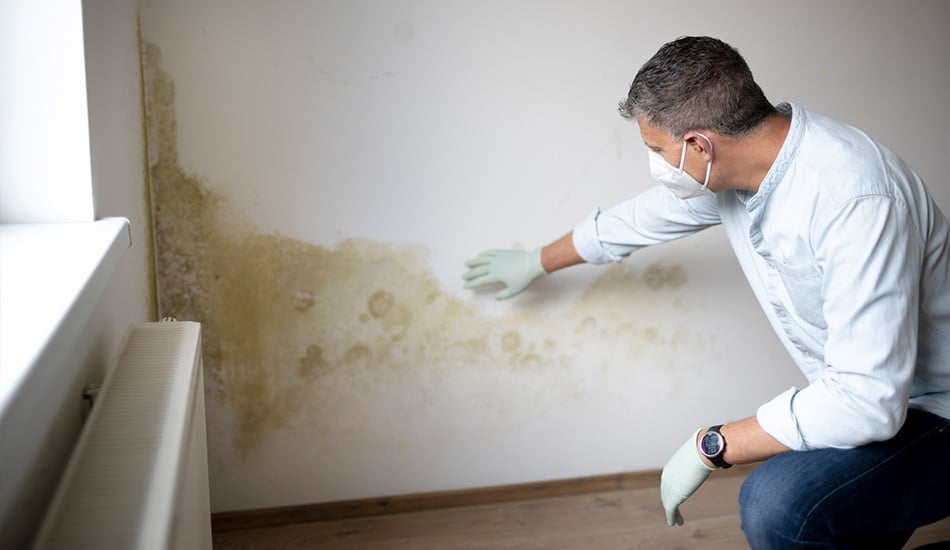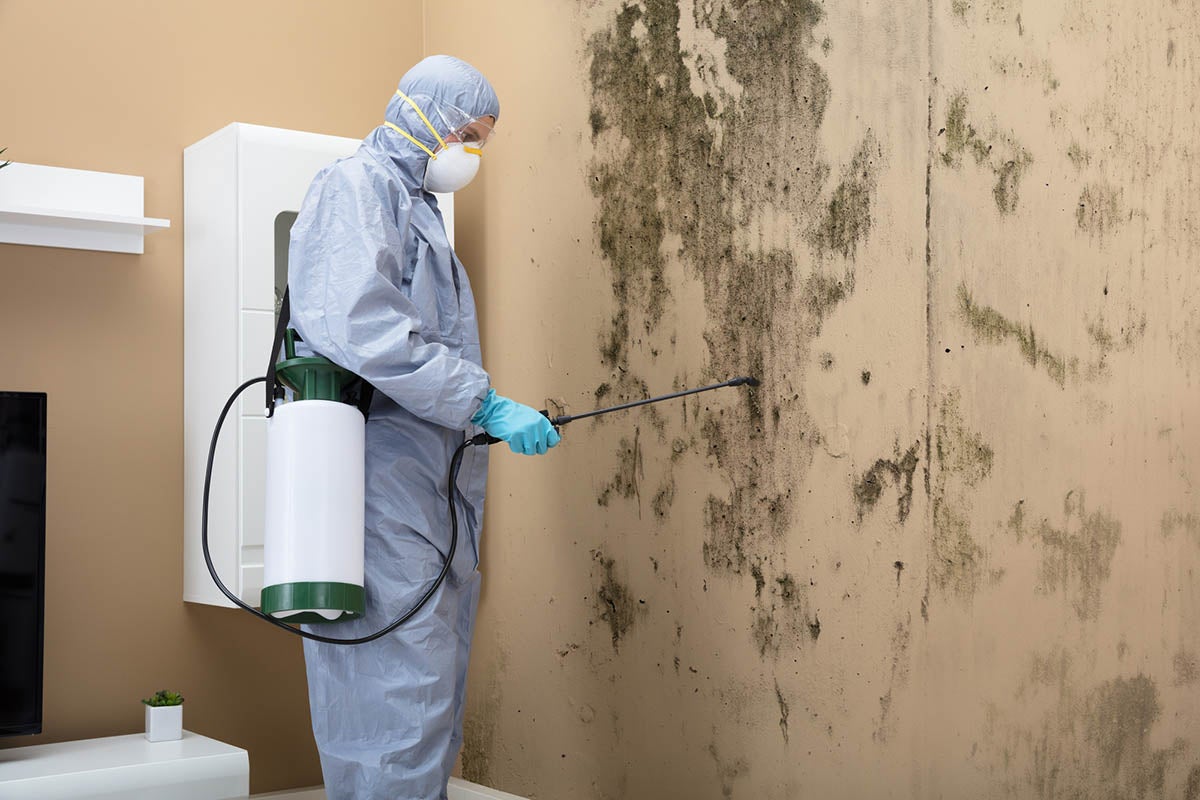After Mold Remediation Approaches for Tidy Areas
After Mold Remediation Approaches for Tidy Areas
Blog Article
Key Tips for Effective Post Mold Removal
Efficiently completing mold and mildew remediation is a diverse procedure that needs focus to detail and adherence to certain protocols. These actions not just verify the success of the removal efforts yet also add to avoiding future mold and mildew growth.
Inspection of Treated Locations
Upon completion of the mold and mildew remediation procedure, a thorough examination of the treated areas is imperative to make certain the performance of the remediation initiatives. This examination works as a crucial action in the post-remediation stage to validate that the mold removal and cleaning treatments were successful in getting rid of the mold and mildew infestation and recovering a safe indoor setting. The assessment ought to be conducted by certified experts who have the proficiency to analyze the remediated areas diligently.
These include aesthetic analyses to check for any kind of indicators of mold and mildew development or water damages, moisture levels to verify that the area is cost-free and completely dry of excess moisture that can promote mold re-growth, and air quality screening to ensure that the interior air is risk-free to take a breath. Additionally, the inspection may entail utilizing specialized devices such as moisture meters and thermal imaging electronic cameras to discover hidden mold or dampness pockets that could lead to future mold and mildew problems if left untreated.

Dampness Control Actions
Effective moisture control steps are essential for avoiding mold growth and preserving a healthy indoor setting. To attain this, it is critical to resolve resources of dampness within the structure. Appropriate ventilation is essential to controlling humidity degrees. Mounting exhaust followers in shower rooms and kitchen areas can help remove excess dampness. In addition, utilizing dehumidifiers in moist areas can help in reducing moisture levels, making it harder for mold to thrive.
Consistently evaluating and keeping the building's outside can additionally avoid moisture breach. After mold remediation. Making certain that rain gutters are clear, downspouts direct water away from the structure, and the roofing is in excellent condition can aid avoid water from permeating into the structure. Correctly sealing doors and windows can likewise help maintain moisture out
In instances where water damages occurs, punctual action is essential. Any type of spills or leaks should be cleaned up and dried within 24-48 hours to stop mold development. Utilizing moisture meters can assist spot hidden resources of water and make certain extensive drying out. By implementing these wetness control measures, the risk of mold and mildew returning can be substantially reduced, developing a healthier indoor setting.
Appropriate Air Flow Assessment
An essential facet of ensuring a healthy indoor atmosphere message mold and mildew removal is performing a complete evaluation of the air flow system. Proper air flow assessment plays a crucial function in preventing future mold growth and keeping air high quality within the affected area.
Moreover, analyzing the air flow system consists of taking a look at the circulation of air throughout the location to recognize any kind of areas of bad flow where wetness and pollutants can gather. Appropriate ventilation not only helps in managing humidity degrees but additionally aids in removing air-borne mold and mildew spores and other pollutants, therefore enhancing overall interior air top quality. By attending to any ventilation concerns post mold removal, property owners can produce a much healthier and much more comfortable atmosphere for residents while minimizing the risk of mold re-infestation.
Cleaning and Sanitation Protocols
To make certain detailed mold remediation, meticulous adherence to particular cleaning and disinfection methods is crucial. Cleansing and sanitation protocols play an essential role in the post-mold removal stage to stop the recurrence of mold and mildew development and make certain a secure and healthy and balanced setting. The initial step in this procedure is the removal of any kind of noticeable mold and mildew growth using suitable cleaner and strategies. It is vital to make use of EPA-approved fungicides and anti-bacterials to successfully get rid of mold and mildew spores and prevent their regrowth.
After the initial cleansing, extensive disinfection of the impacted locations is essential to eliminate any staying mold spores and hinder their proliferation. This step is critical in stopping the spread of mold and mildew to various other parts of the residential or commercial property. Furthermore, applying safety nets such as using mold inhibitors and preserving correct ventilation can aid reduce the threat of future mold and mildew infestations. By adhering to stringent cleaning and disinfection protocols, homeowner can make sure the remove mold using bleach effective removal of mold and mildew and produce a healthy and balanced interior environment for residents.
Surveillance and Upkeep Strategy
Carrying out a routine monitoring and upkeep plan is important for ensuring the lasting efficiency of mold removal efforts. As soon as mold and mildew remediation is finished, it is important to establish a surveillance routine to evaluate the success of the removal process.
In addition, establishing a maintenance strategy is essential to preventing future mold and mildew problems. This plan might include activities such as fixing pipes leaks, boosting ventilation, and regulating indoor moisture levels. Normal maintenance not just assists in preventing mold and mildew however also adds to maintaining a healthy and balanced next indoor atmosphere. It is advisable to record all monitoring and maintenance activities to track development and ensure consistency in the maintenance of the remediated areas. By implementing a thorough tracking and upkeep strategy, the risk of mold re-emergence can be significantly lowered, promoting a secure and clean living or workplace.
Verdict
Finally, effective article mold remediation entails complete examination of dealt with areas, execution of dampness control procedures, assessment of proper air flow, adherence to cleaning and disinfection methods, and establishment of a monitoring and upkeep plan. These key actions are important to guarantee that mold development is efficiently eliminated and protected against from persisting in the future. By following these standards, building owners can maintain a risk-free and healthy setting for passengers.
Upon completion of the mold and mildew remediation procedure, an extensive inspection of the dealt with areas is critical to make sure the effectiveness of the removal efforts. These include aesthetic assessments to inspect for any indications of mold and mildew growth or water damages, dampness levels to verify that the location is dry and complimentary of excess moisture that could promote mold and mildew re-growth, and air high quality screening to ensure that the indoor air is risk-free to take a breath. Additionally, the assessment might involve utilizing specialized devices such as dampness meters and thermal imaging cameras to find covert mold and mildew or wetness pockets that could lead to future Visit This Link mold and mildew problems if left unchecked. By attending to any air flow concerns upload mold and mildew remediation, residential property proprietors can develop a healthier and more comfortable atmosphere for passengers while lowering the threat of mold and mildew re-infestation.

Report this page